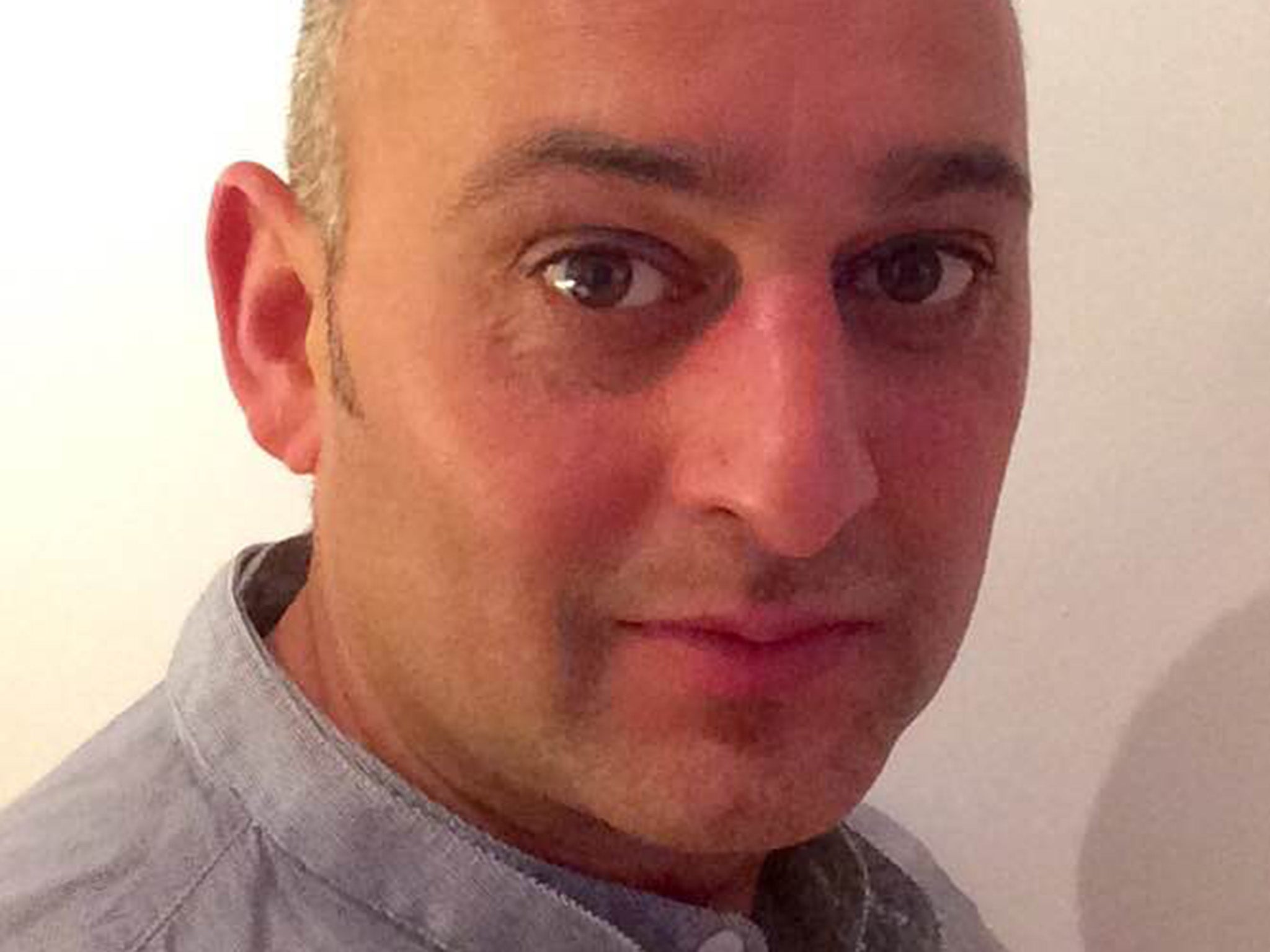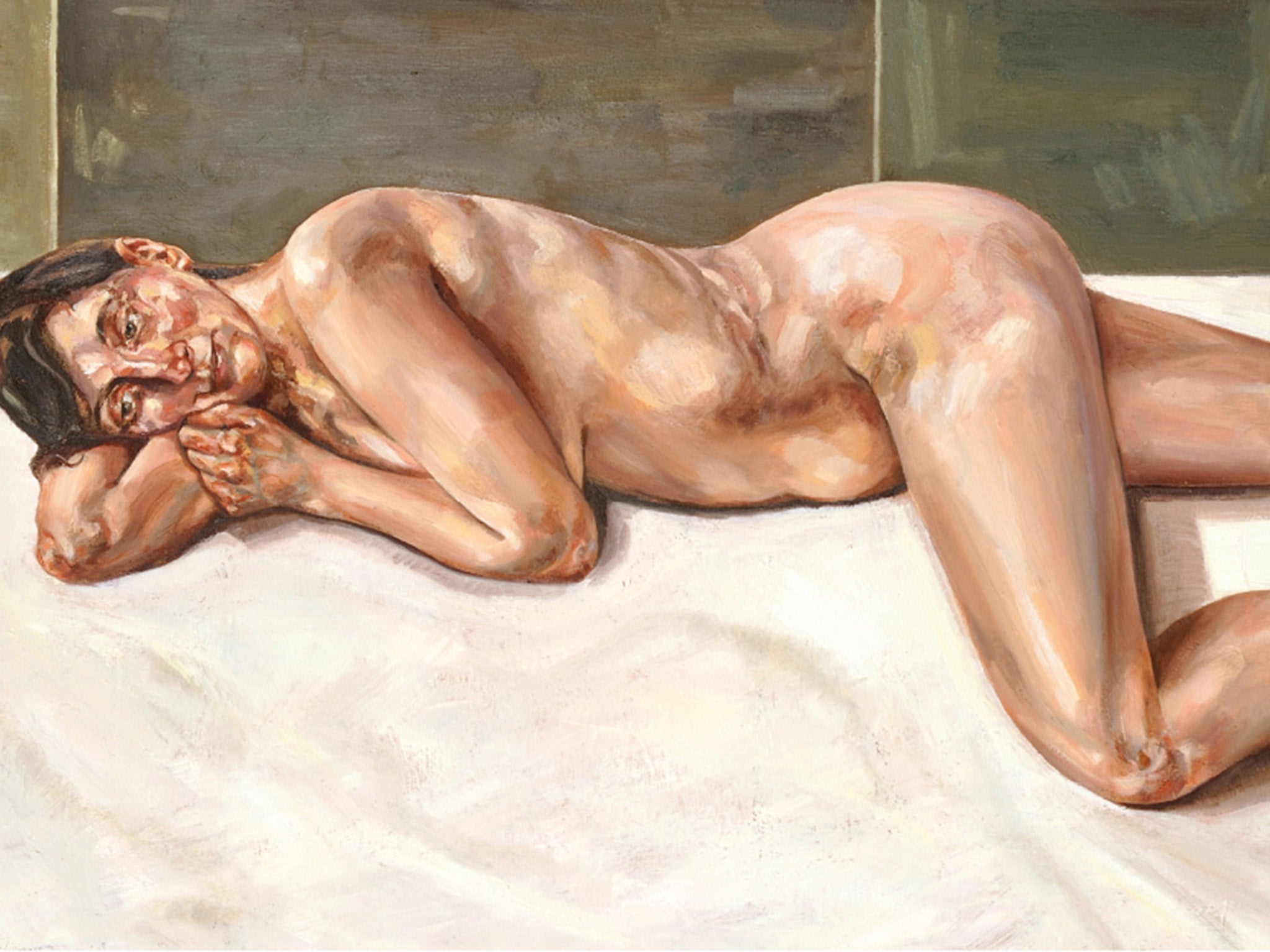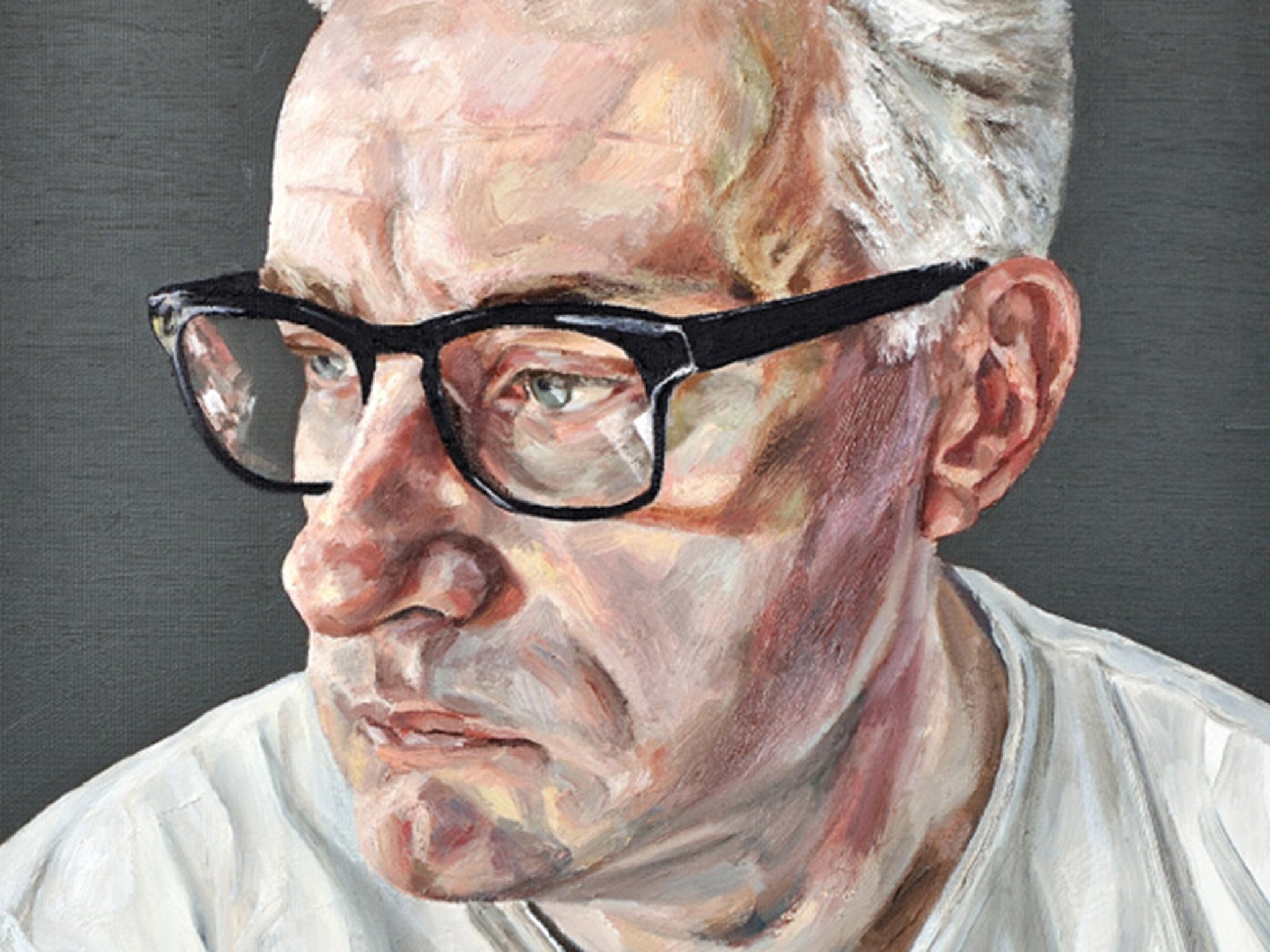Rizvan Rahman: Convicted art fraudster goes straight with his own exhibition
Rahman, who says he is influenced by Lucian Freud, was jailed for selling fake paintings of postwar British artists

For two years, Rizvan Rahman made a living from selling forged works of art. He is now hoping to find redemption – and make an honest living – from selling his own original work.
Rahman, who says he is influenced by the great portrait artist Lucian Freud, was convicted in October 2011 of selling fake paintings of postwar British artists, including Mary Fedden and Jack Pender and jailed for 18 months.
While inside, he says, he had time to paint. Since being released in March 2012, after serving five months of his sentence, he has devoted “thousands of hours” in putting together 22 large-scale oil paintings that can be seen in his solo show “Point of Departure”, which opened on Thursday in London’s Mayfair.
Although investigators suspected that he had painted the fake works himself, he vehemently denies it. “I was never charged or convicted of painting anything, with good reason,” he said. “Once the investigation learnt I was an artist, they just assumed that was what happened.”

He was sent to Ranby Prison. “I had an awful vision of how it would be, but it wasn’t the stuff of worst nightmares,” he said, partly because he was allowed to paint. “I painted in my cell. There were times I would paint until four in the morning. I was allowed to get on with it. It was escapism; it occupied my time and brain.”
The trained artist has revealed that not only did painting serve as escapism while he was in the north Nottinghamshire prison, but he hopes he may be able to work at it full time. “I have no control over how I’m perceived, but I hope that people will perceive my work in a democratic manner, without being clouded by my history and with a critical eye,” Rahman told The Independent.
“In a sense it is redemptive,” he continued. “It is the story of a struggle and overcoming troubles and obstacles.”

“Point of Departure” seemed to be a relevant title, he added. “I have always wanted to concentrate on painting. It’s a title that suggests a start.”
The artist, who is married to a primary school teacher with whom he has three children, was born in Karachi in 1970 and moved with his family to Leicester at the age of four.
He graduated from De Montfort University with a degree in fine art and later qualified as an art and design teacher. “I always had the ambition to paint. I’m obsessed by painting,” he said. “How that was to translate into a career I did not know.”
Initially, it meant carrying out portrait and landscape commissions for clients “as a means to an end” but was never his passion. Rahman then started dealing in art in 2006, which the exhibition notes describe as a “folly that had sprung from an art collecting hobby”.
He maintains that he was given bad advice over the paintings he sold between 2006-2008 which turned out to be forgeries. He was jailed after the case came before Leicester Crown Court.
Judge Ebrahim Mooncey said at the time: “It is clear that for nearly two years you were involved in defrauding members of the public, art galleries and artists.”
“It was a very distressing time. I was distraught, especially over the pain and regret for my family,” he said.
But after leaving prison, rather than losing clients, he found a “heightened” interest in his work and continued to receive commissions as well as working on his own art.
He has sworn off dealing. “It was an unfortunate period and not one I want to do again. My life for the past five years has been all about painting.”
Focusing on his own work has been possible because of an anonymous benefactor, who has supported him since 2013. He would not disclose the name, but said the man knew his history and “without his help I wouldn’t be here”.
Rahman said: “He saw my work and believed in what I was doing. He suggested he could financially support me to concentrate on doing this and not have to worry about earning a living.”
The works on display seem to draw influence from Lucian Freud. “Anyone who’s serious about painting the figure has to look at the work of Freud because he is, without doubt, one of the greatest figurative painters who has ever lived,” he said.
“Beyond Freud, I look more at Rembrandt, Van Dyck, Velasquez and Rubens and John Singer Sargent is a great favourite of mine.”
Join our commenting forum
Join thought-provoking conversations, follow other Independent readers and see their replies
Comments